Purple lilies are some of the most fascinating types in the flower Liliaceae family. A perfect balance of blue and red colors, purple lily varieties always make an impression in gardens and floral arrangements. Who knows, you just might decide to plant some of these Lilium genus plants in your garden.
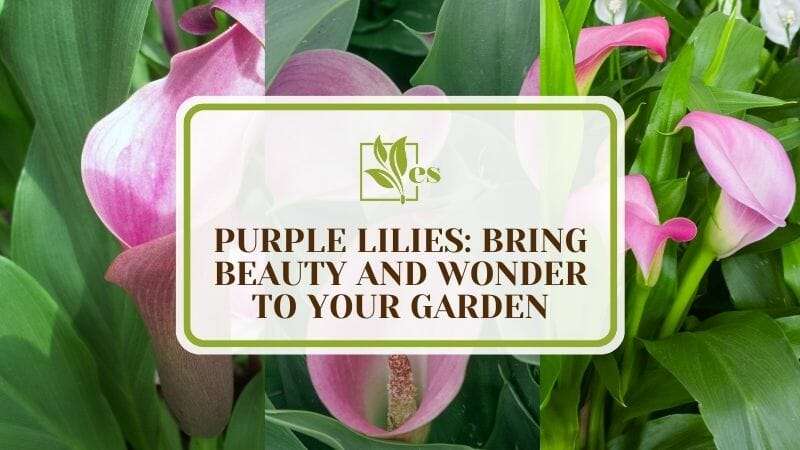
In this list, you will get to see several types of lilies, including the elegant calla lily, that will inspire you to no end.
JUMP TO TOPIC
- List of Purple Lilies
- 1. Zantedeschia Odessa
- 2. Zantedeschia Captain Violetta
- 3. Zantedeschia Purple Sensation
- 4. Zantedeschia Captain Prado
- 5. Zantedeschia Lavender Gem
- 6. Zantedeschia Captain Paris
- 7. Zantedeschia Amethyst
- 8. Zantedeschia Captain Promise
- 9. Zantedeschia Black Forest
- 10. Zantedeschia Captain Reno
- 11. Zantedeschia Black Star
- 12. Zantedeschia Picasso
- 13. Day Lily
- 14. Camas Lily
- 15. Lily of the Nile
- 16. Lily of the Incas
- 17. Sword Lily
- 18. Lily Turf
List of Purple Lilies
1. Zantedeschia Odessa
Zantedeschia is the scientific name for calla lilies. This dark purple calla lily is nothing short of mysterious and magical. Most people get this purple variety for its gothic beauty, while gardeners cultivate it for ease of care.
Note that the colors can sometimes be so deeply saturated that many people mistake it for a black version of the calla plant.
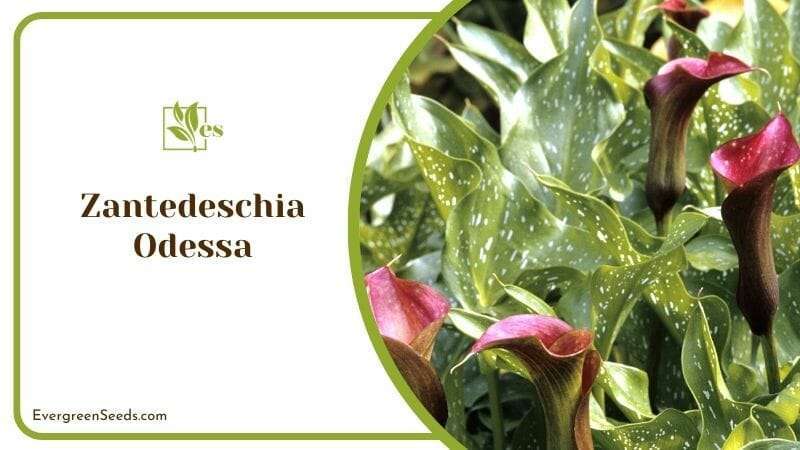
On the other hand, these dark violet lilies tend to bloom from June until the start of the frost season.
These beautiful lilies are easy to grow to the point where they can become invasive in some states and regions. This particular variety can be grown in containers or directly in the ground without any issues. If you want to showcase its dark purple colors, you can group Odessa with contrasting white flowers, such as the Casa Blanca lily.
2. Zantedeschia Captain Violetta
Completely on the opposite end of the spectrum, we have the light violet calla variety in the form of Captain Violetta. The delicate trumpet flowers showcase the gentle colors of this specific cultivar, as a result, this aspect also makes a wonderful cut flower to be grouped with the Odessa cultivar in a table centerpiece or a bridal bouquet.
Captain Violetta also pairs exceedingly well with other lilies of different colors, such as pinks, oranges, and yellows, but of course the purple one is the most outstanding.
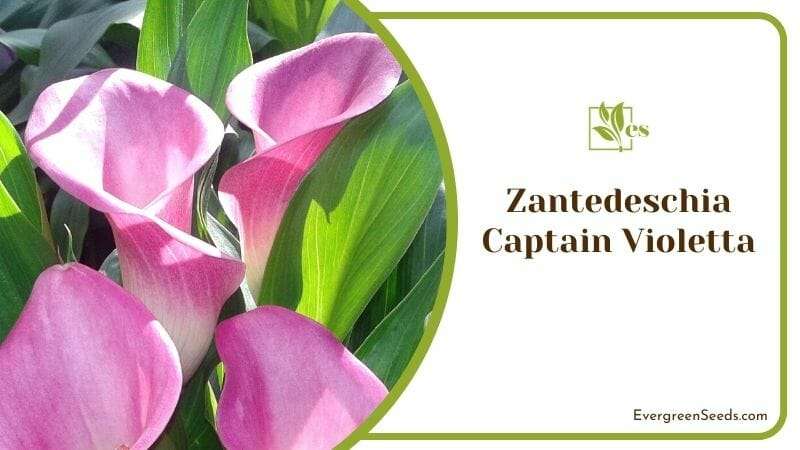
The riot of colors can make you think of vivid summer sunsets or promising sunrises.
Note that these colorful inspirations may help you want to grow calla plants so as to keep them with you all throughout the year.
3. Zantedeschia Purple Sensation
The Purple Sensation gives you the perfect velvety colors to cure your need for all things purple. As it has stunningly vibrant and saturated, this calla plant produces one of the most profuse numbers of calla blossoms during the summer. You can be forgiven for mistaking its elegant blossoms for artificial ones, because that is how significantly they are beautiful.
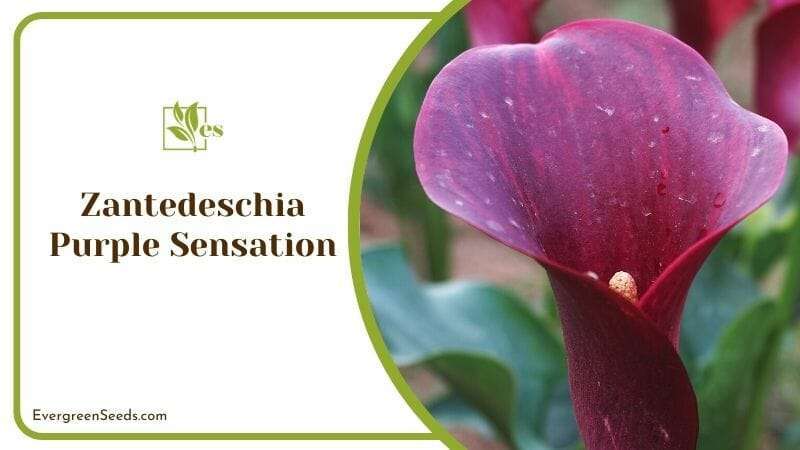
The Purple Sensation lily flower is a great median if you plan to display it alongside other calla varieties of the same color family.
In addition, you can try having multiple purple flowers in one arrangement, or simply decide to showcase one gorgeously purple bloom in a plain glass bottle. However, either way, this cultivar will always captivate you with its beauty and spirit.
4. Zantedeschia Captain Prado
Naturally attractive and deeply saturated, the simple fluted flowers of Captain Prado are nothing short of elegant. The rich tones of warm purples and ravishing reds make these calla blossoms stand out, even among their lily varieties. Which means that if you’re looking for flowers that are magical yet vibrant, then Captain Prado is your best option.
You can always mix the electric purple hues of these flowers with other calla blossoms to create a harmonic purple bouquet.
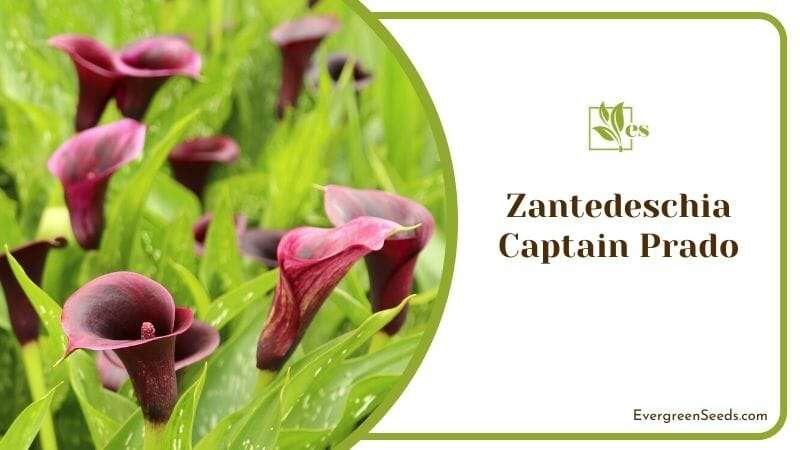
You may even add Captain Prado flowers with other types of lilies, such as the Asiatic lilies, that come in a variety of colors and shapes.
However, another favorite way to display these elegant lilies is by simply placing one flower in a vial or fluted transparent glass bottle. These types of floral displays will never fail to uplift our feelings!
5. Zantedeschia Lavender Gem
The Lavender Gem is your perfect pastel lily flower if you’re looking for that sweet feminine calla bloom. Delicately formed with slightly wavy flower margins, this cultivar can be placed in containers to keep your house beautiful inside and out, when you are aiming to give your place a stunning addition.
However, if you’re fortunate to have warm climates all throughout the year, then go ahead and plant some in the ground as well.
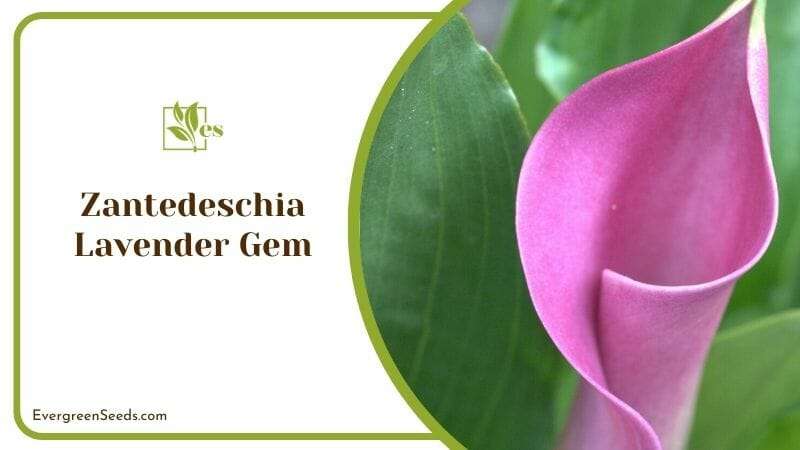
This particular cultivar is beloved for a reason because the colors are very pleasing, even to those who prefer the darker lilies. Note that the right balance of beauty and simplicity can be found in the Lavender Gem, which can be a little challenging for some varieties to acquire.
Basically, if you’re truly interested in having this lily cultivar for yourself, just give it the most basic care, and it will reward you with abundant flowers.
6. Zantedeschia Captain Paris
This variety is also called Pacific Callas. However, the Captain Paris has a deep purple shade saturated with burgundy tones. You can definitely see how the warm reddish-purple colors of the calla flowers stand out amidst the jade green foliage of the plant.
On the other hand, it is not as deep or dark as the Odessa variety, but, if you plant both of them, you will certainly get the gothic garden of your dreams. This variety would include a unique touch that not all gardens have.
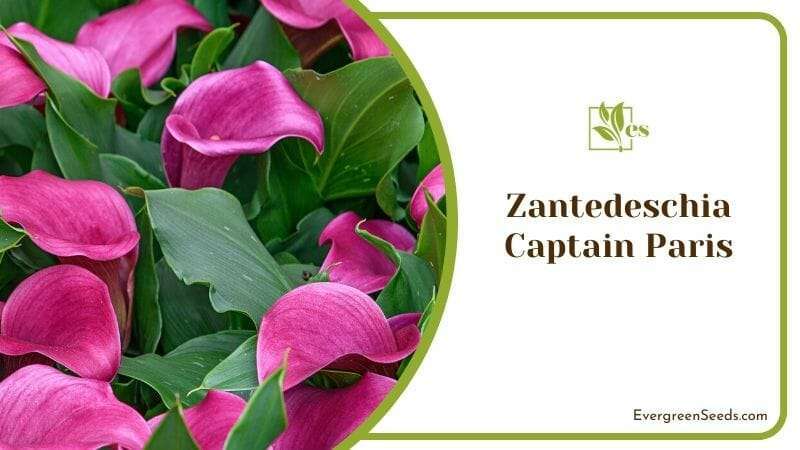
If you’re not an avid gardener, you can always buy them from your favorite florists. Just because we love flowers doesn’t always mean we have to grow them ourselves.
If you’re looking for dark lilies, then you can group Captain Paris with other types of darkly-colored lilies, such as Black Pearl Asiatica or the Midnight Mystery Asiatica. A floral arrangement like this will surely delight your inner goth while honoring the naturist in you.
7. Zantedeschia Amethyst
This is for the calla lovers out there who prefer their purple blossoms with a touch of pink. These lovely calla flowers are so pretty and feminine that they can be easily included in most summer centerpieces and bouquets. The candy colors of the Amethyst calla lily just remind us of all things sweet and innocent.
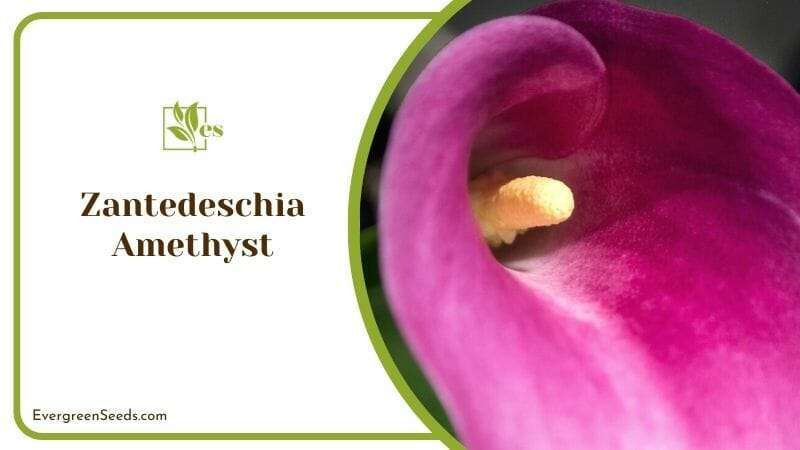
As with most calla plants, the Amethyst requires very little maintenance. Just give it its most basic care, and it will reward you with profuse flowers from summer to fall.
Growing calla lilies merely requires you to provide them with bright indirect light, well-draining type of soil, and regular watering, which is not strictly challenging to keep. Of course, you can opt to plant calla varieties next to each other or mix them with other lilies.
8. Zantedeschia Captain Promise
Captain Promise is an exquisite variety that produces rich medium shades of purple calla blooms. If you’re looking for warm purple tones in your calla blossoms, then this one just might be for you.
Remember that the fluted petal has slight striations, making the flower even more textured and richer in appearance.
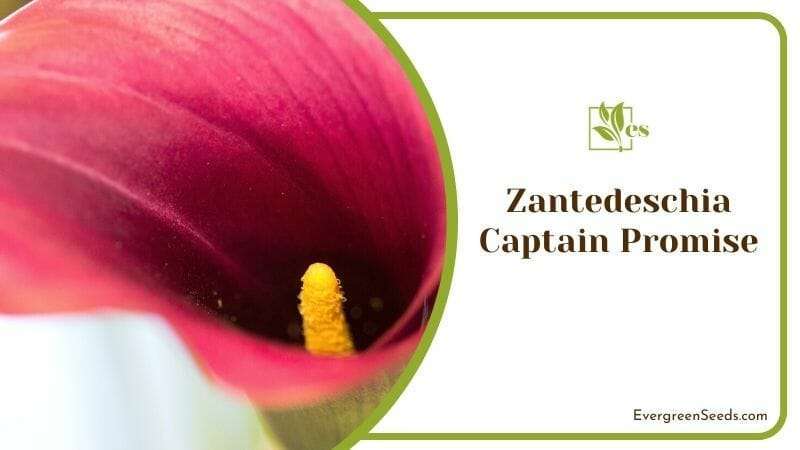
In other words, just like its namesake, this wonderful calla blossom is just bursting with promise.
Most calla plants can grow up to around 16 inches, and Captain Promise is no exception. While calla plants are originally from South Africa, they can thrive almost anywhere, as long as they receive the right amount of sunlight, temperature, and water (you can safely use purified tap water). If you live in colder regions, you might want to dig them up and bring them inside for the winter.
9. Zantedeschia Black Forest
This is another dark-colored calla blossom to entice the magnetic mystery of gothic gardens, and it is a stunning variation of lilies. It looks almost black, but the dark purple hues show up from the center of the flower until it fades into a rich wine color at the edges. As you have seen other dark purple calla varieties so far, but the Black Forest will surely delight even the darkest hearts.
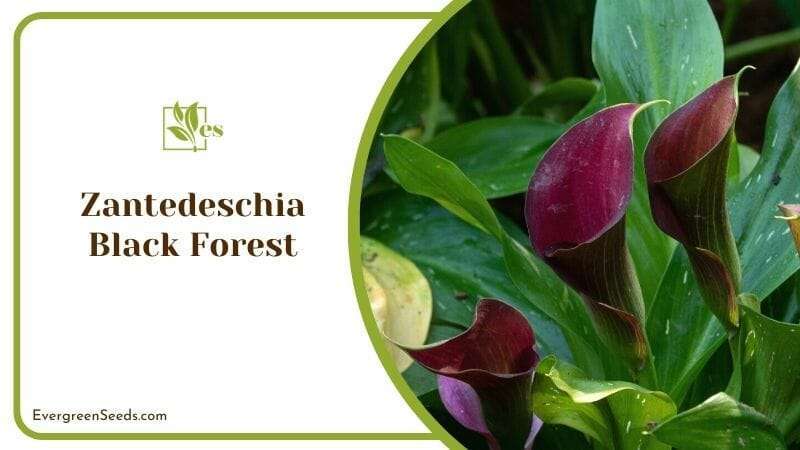
Imagine if gardens grew calla plants with different types of dark purple flowers. The stunningly mysterious blooms will contrast deeply with the rich green foliage, making every inch full of wonder and drama.
You can make yours as enchantingly dark and incredibly enigmatic as well with the Black Forest. Try growing some, and you just might end up with a garden full of magical dark purple calla blooms in no time.
10. Zantedeschia Captain Reno
Deeply dark and curiously attractive, Captain Reno is a richly colored flower with hues similar to that of a deep juicy purple grape it has a variation of purple and a darker shade of purple, which is the maroon shade.
Which means if you’re looking forward to planting calla plants in your garden, then you might be tempted to try this dark purple beauty.
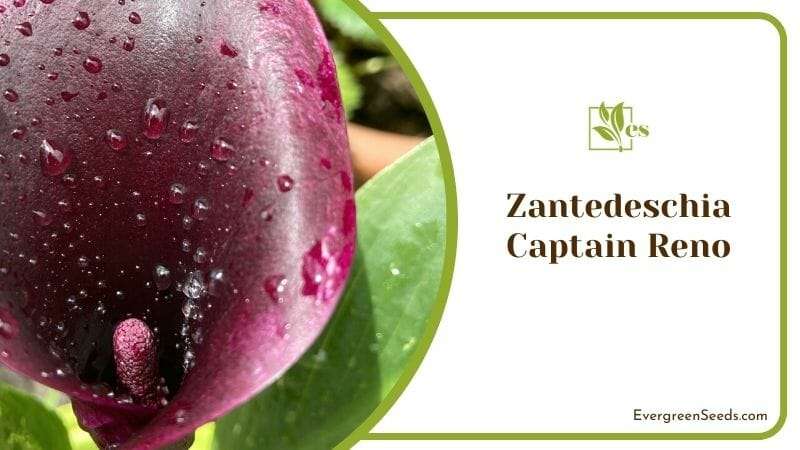
The Captain Reno will blend in beautifully with all types of flowers, including Tiger lilies and Liliums, as it has wonderful darker shades.
The idea of using lilies with hot pink, vibrant orange, and scarlet red colors to bring out the purple-blue tones of Captain Reno is one that’s highly looked upon.
11. Zantedeschia Black Star
The Black Star lily is indeed a star in its very own right. Most gardeners love it because of the deep purple saturation that leans towards the blue spectrum instead of warmer reds and burgundies.
Some people mistake the color as being black, and we can’t blame them because of the intense tone of the shade. However, if you look closer, the colors are more similar to the deep aubergine tones of a dark eggplant-purple.
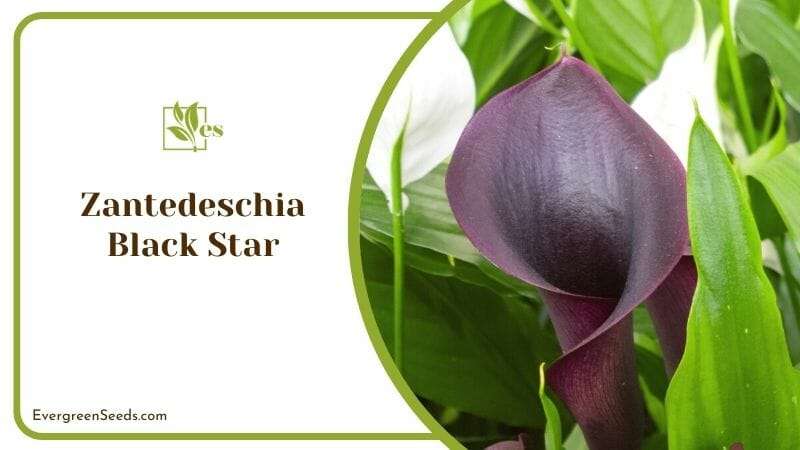
The Black Star calla plants would be the most perfect additions to any garden, whether they’re gothic or simply in need of some drama. So, if you’re looking to add even more spectacle, pair the Black Star with some white calla plants and watch the drama unfold right before your very eyes.
Or better yet, group the Black Star with some purple calla blooms as well as those in pinks, scarlet, bright reds, and maroons for that spectacular floral show.
12. Zantedeschia Picasso
The ultimate drama queen for the purple-colored calla lily family would probably be the Picasso. Combining purple and white colors in a single flower, this cultivar is an example of how to draw everyone’s attention without doing anything much, hence the name sums it all up for you.
The inner Purple Heart slowly fades into a creamy white, making the whole flower simultaneously fashionable and elegant.
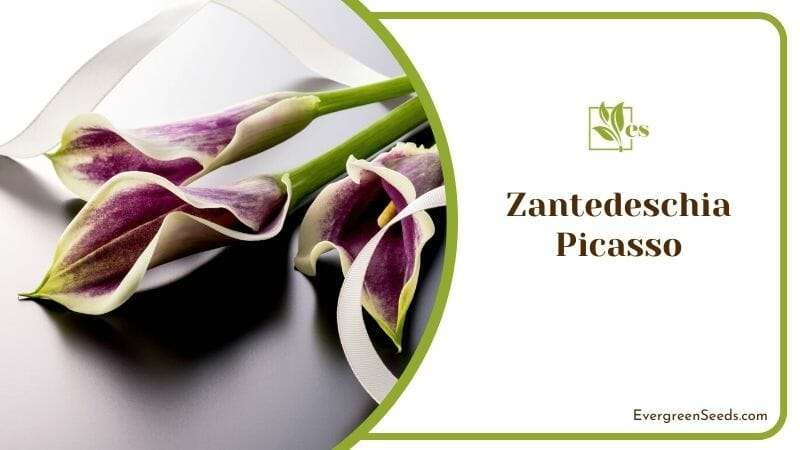
Basically, the Picasso variety of the lily truly lives up to its name, especially when planted or grouped in mass. From afar, you can immediately see spots of white and purple, reminiscent of his famous Pastiche painting.
It is a great match if you decide to pair this cultivar with pure purple liliopsid genus blooms to bring accentuate its gradient colors.
In addition, you may even try combining Picasso with pure white calla blooms, or mixed with some pinks and yellows. As you try growing calla plants using this cultivar, and you just might have yourself a true masterpiece right in your garden!
13. Day Lily
Day lilies, sometimes spelled daylilies, are related more to the onion family than the Lilium family. While its flowers resemble lilies, day lilies are not classified as true lilies. The difference has to do with how their stems and leaves grow.
The strapping leaves on multiple stems from the base is one of the most simple methods to tell day lilies from true lilies.
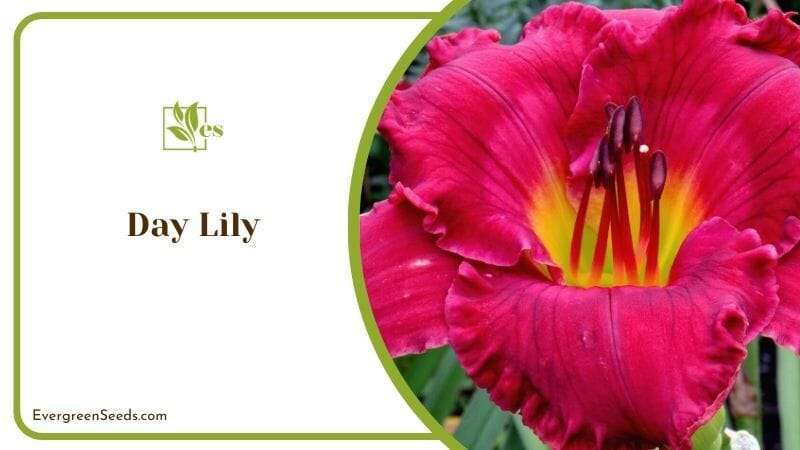
Day lilies come in a myriad of colors, from vibrant monochromatic tones to variegated and colorful combinations, however the darker shades have a significant vibrance to them.
Like their plant look-alikes, the day lilies thrive in well-draining soil located in a place that will be able to receives at least six hours of daily sun exposure. These showy plants make wonderful hedges and borders, since they put on a spectacular display of colors when planted in masses. Note that you can group these wonderful plants for that exotic, tropical look for your garden.
14. Camas Lily
Formally known as Camassia, this lily is also known by many other names, such as Indian hyacinth and wild hyacinth. The similarity doesn’t end there, since the Camas lily has beautiful bluish-purple flowers that mimic the intriguing lavender tones of the fragrant hyacinth, but the lavender-color is what makes them look appealing.
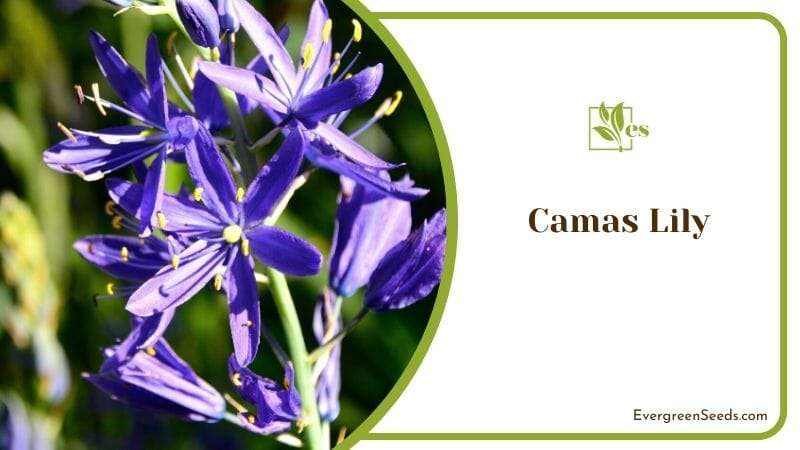
In North America, the Camas lily can be found growing abundantly in well-hydrated meadows.
Camas lilies are members of the asparagus family and are also edible. The roots of the lily are dug up and eaten fresh or boiled.
Some even use boiled this type of lily juice mixed with honey as herbal cough medicine. These lilies are often grown in wildflower gardens, where their violet flowers are often displayed as cut flowers in floral arrangements.
15. Lily of the Nile
Lily of the Nile, or Agapanthus, belongs to the Amaryllis family. It is sometimes called the African lily, since it originates from South Africa, which is where the Nile River is found.
This wonderful lily is a popular resident in many gardens since it is incredibly easy to grow and displays large masses of spectacular purple sprays of flowers with very little care.
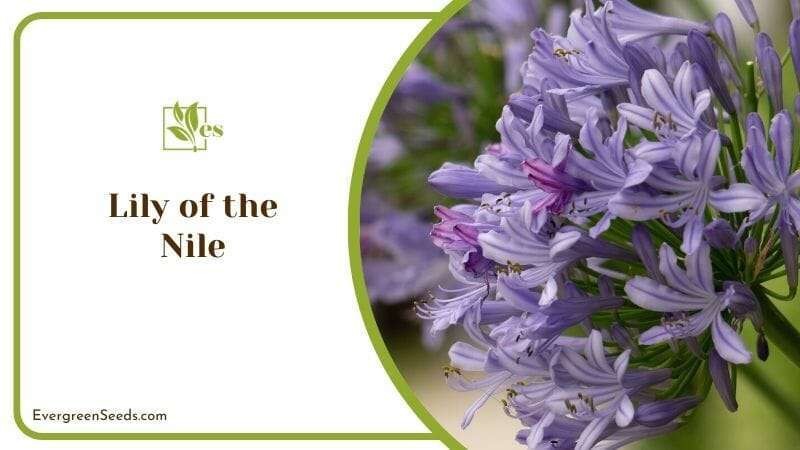
Lily of the Nile plants can grow as tall as six feet and once the flowering season starts, your garden will look like swaying displays of pastel purple fireworks.
The ancient Greeks gave these purple lilies meaning by calling the plants Agapanthus, which is made up of two words. Agape means love and anthos means flower. Symbolically, the Lily of the Nile is the flower of love, this is due to its graceful blooms.
16. Lily of the Incas
While the Lily of the Incas already has a most magical name, it is also called the Peruvian Lily since it is native to the South Americas. Some gardeners have taken to calling this stunning plant by its scientific name, Alstroemeria.
Due to its popularity, the Lily of the Incas has become natural garden residents in the United States, Mexico, New Zealand, Madeira, Australia, and the Canary Islands.
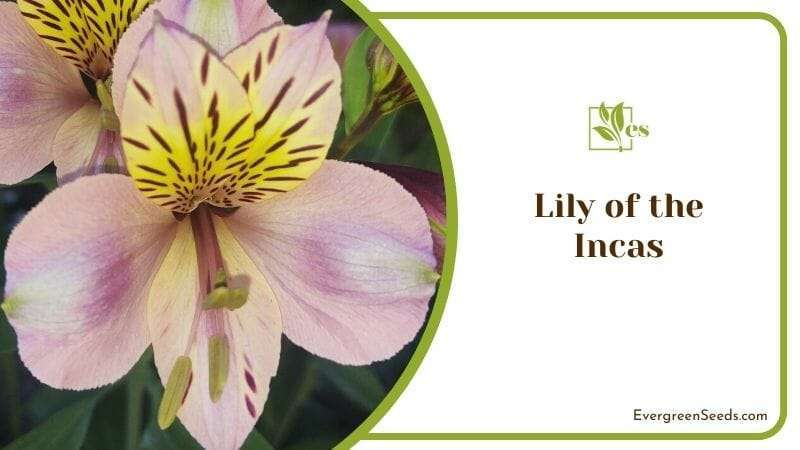
Lily of the Incas is a perennial plant that loves to showcase its lovely purple blooms during late spring or early summer. While they have fantastic flowers that include pink, orange, red, yellow, and white, the Lily of the Incas can be a source of toxins for people who have prevalent allergies.
It is best to enjoy this colorful plant from a respectful distance, because you do not wish to be intoxicated by this beautiful flower.
17. Sword Lily
Sword lilies are also known as gladiolus since they resemble the swords of Roman gladiators. This perennial flowering plant belongs to the iris genus. Sword lilies spread by growing corms underground, quickly filling up garden areas with their delicate flowers on lance-like inflorescences.
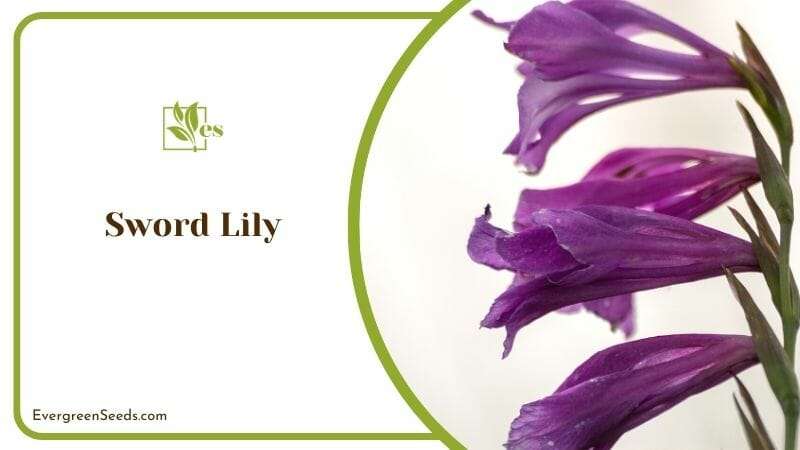
The sword lily comes in a variety of colors, and some of them sport variegated flowers. Note that these plants can be found naturally in Asia, Africa, and the Mediterranean parts of Europe.
Sword lilies symbolize the strength of character, sincerity, faithfulness, and integrity. A significant symbol for this flower is that in Mexico, it is common to see sword lilies as floral decorations during the Day of the Dead, as they pay their respect with it.
18. Lily Turf
The lily turf is not a real lily since it belongs to the Liriope genus, which is under the asparagus family. It has other names in the horticultural community, such as border grass, monkey grass, and big blue lilyturf.
This is due to the evergreen grass-like appearance in addition to its foliage and the profusion of lilac-colored flowers in the summer. These flowers, in turn, produce berries with single seeds during autumn.
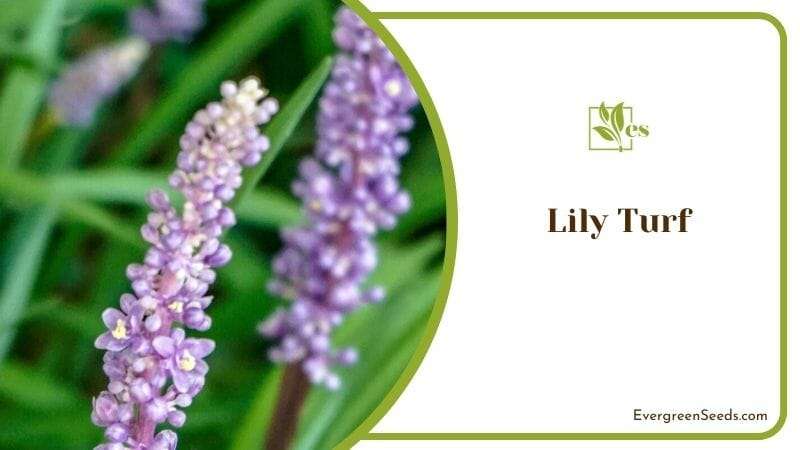
Lily turf is planted in some residential gardens as well as in some commercial ones for its beauty as a floral filler.
Its long-lasting shelf life has made it highly popular in centerpieces and bouquets. Some states consider this plant a threat to native wildlife, so if you’re looking to plant lily turf in your area, you should consider checking with your local wildlife authorities.












